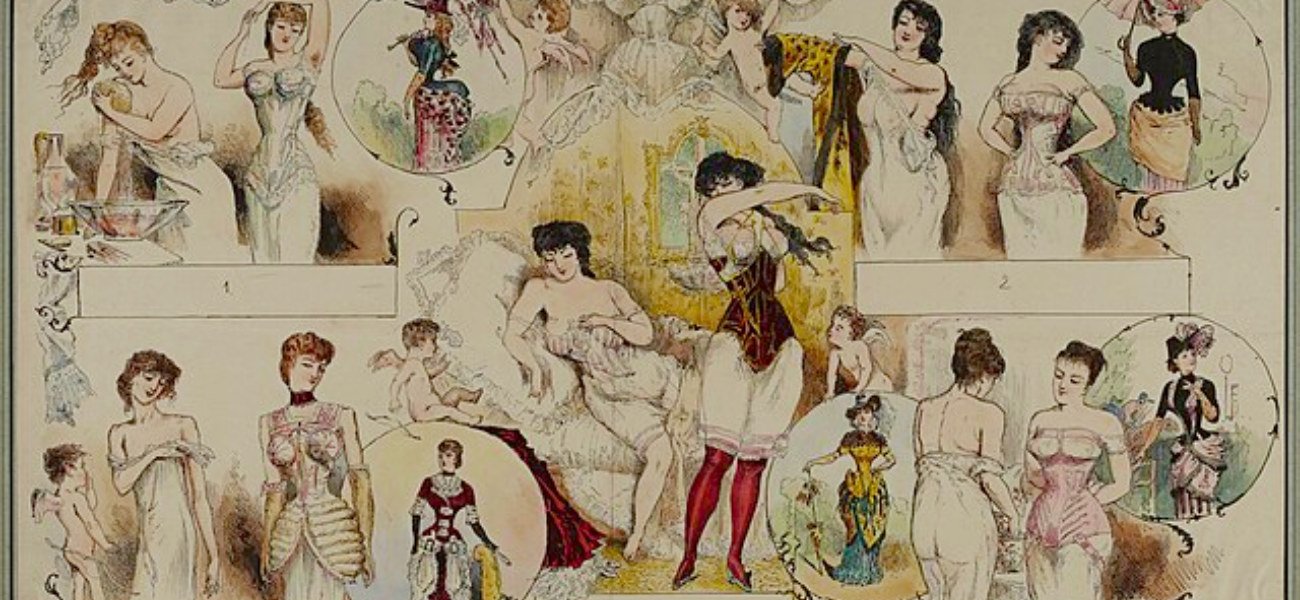- May 23, 2025

The Renaissance and Baroque: The Birth of the Corset
In the Renaissance and Baroque, the female body re-emerged—this time as a shape to be sculpted. This story reveals how the corset became both a beauty tool and a symbol of social control.
After the Middle Ages, when the female body was a “forbidden zone,” a completely different era began.
A worship of beauty, art, theatricality, and—above all—a visual ideal of the body were introduced by the Renaissance (14th–16th century) and Baroque (17th century).
After being suppressed for millennia, the female body was once again the focus of attention. But not as something natural — rather, as a form that had to be created, shaped, and forced into aesthetic boundaries.
And it was during this period that an item was born that would change women’s fashion for centuries to come — the corset.
The Renaissance: Beauty as Harmony… but Controlled
The Renaissance ideal of feminine beauty included a defined form, rounded hips, a high neckline, and a slender waist.
Every seam and brushstroke in sculpture, fashion, and art mirrored these ideals.
Women no longer hid their bodies — on the contrary, they began to highlight their shaped form, and this is where the corset enters the picture.
What did the first corset look like?
Similar clothing was first mentioned in Italy in the 15-th century. Women started donning form-fitting bodices that were strengthened with metal or wood components.
This was not yet a separate undergarment — more like a stiffened bodice that:
- pushed the breasts down.
- reduced the waist size,
- made the top part of the torso flat.
Corsets were incorporated into dresses at the time, not worn below them.
Materials:
- inlays made of wood or bone (whalebone was added later).,
- coarse linen or silk,
- lace on the sides or back.
Victorian corsets, from left to right: Transitional corset c.1830-1840s, S&S brand British corset c.1880s, Warner brand American corset c.1890s. All photos courtesy of The Underpinnings Museum and Tigz Rice.

France, 16th Century: The Emergence of the True Corset
The corset assumed a new function during Catherine de’ Medici’s court in France.
The queen, who was well-known for her love of fashion, established the modest waist norm.
She reportedly even prohibited ladies with waists more than 33 cm from attending court, a requirement that could only be met with a corset that was firmly knotted.
During this period, the corset became:
- an additional undergarment,
- mandatory for the upper class,
- a feminine “discipline” instrument.
Its extended body, tightly tightened waist, and rectangular cups gave it a more geometric form. The breasts were raised by pressure from underneath since they were not naturally supported.
Baroque: When Fashion Became Theater
A new body language emerged in the 17th century.
Baroque was all about excess—in shapes, colors, emotions, and textiles.
In this style, the feminine body turned into building.
The Baroque Corset:
- had a stiff whalebone frame,
- shaped a “straight” torso with no curve,
- separated the hips and torso visibly,
- raised the breasts nearly straight up.
It was worn over a chemise rather than on bare skin. On top — a heavy dress, sometimes with multiple skirts. Added to the ensemble were:
- panniers—side frames that provided breadth to the garment,
- corset lacing — to tighten the figure to the limit.
A maid was needed since women could not put on or take off the corset on their own. Dressing evolved into a social prestige ritual.

Corset as a Symbol of the Era
The corset was more than simply undergarments over these decades.
It served as a social control mechanism and a representation of the role of the woman: elegant, lovely, but constrained.
Girls were taught by fashion itself that you have to fit inside a frame in order to be accepted by society.
The corset became — both literally and metaphorically — the armor of a woman’s societal role.
What Have We Taken from This Era?
Lingerie was finally no longer “invisible” during this period.
Though frequently at the expense of the body, it became a crucial component of image-making.
It was during the Renaissance and Baroque that a paradox was born: the woman looked perfect, but felt unfree.
This was the start of a protracted conflict between comfort and style, which contemporary lingerie is now rethinking and resolving.
🔗 The 18th and 19th centuries, when lingerie became even more intricate, multi-layered, and increasingly represented class and social standing, will be the subject of the series’ next installment.
With Love – your Moonlit team
